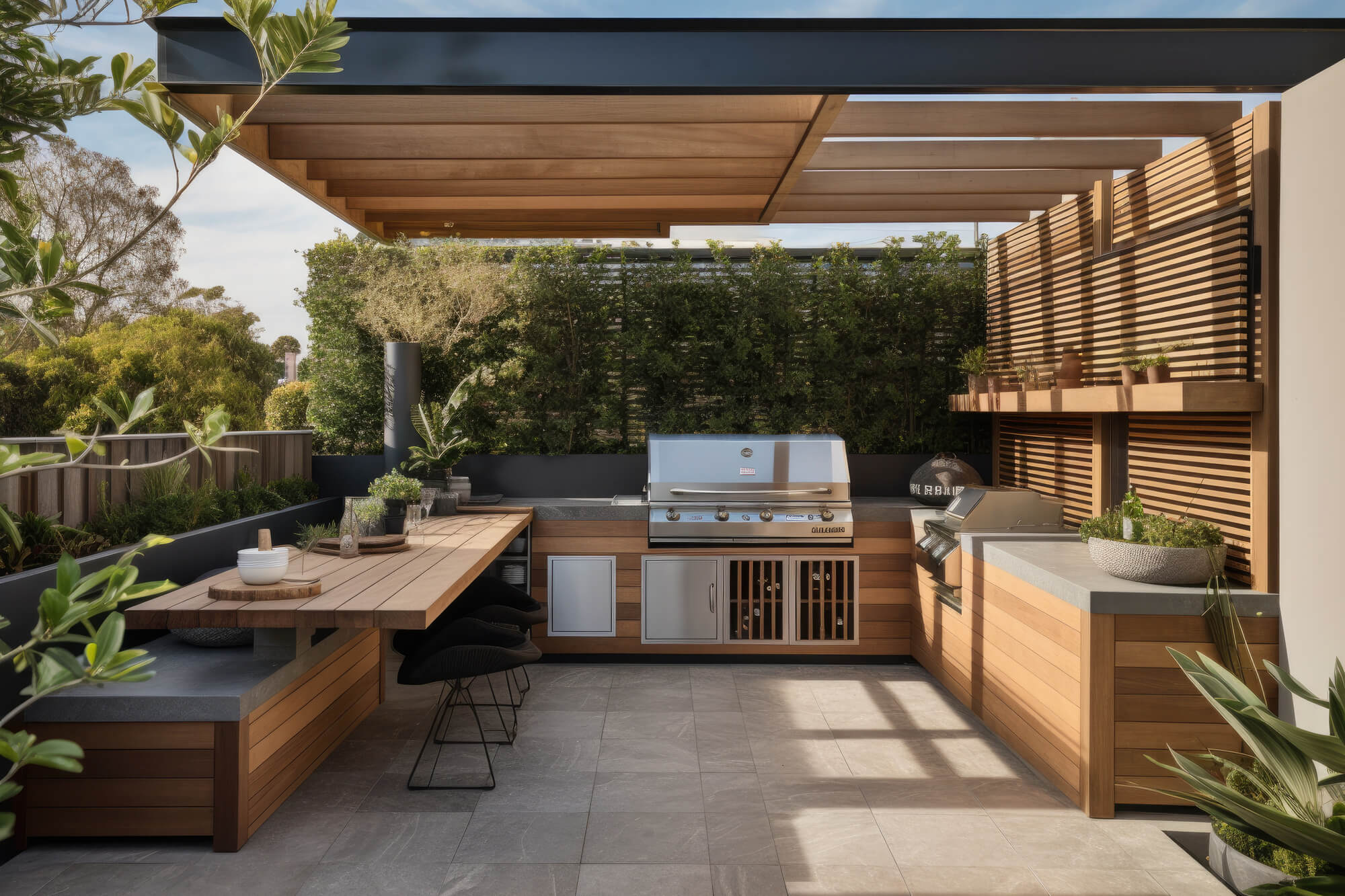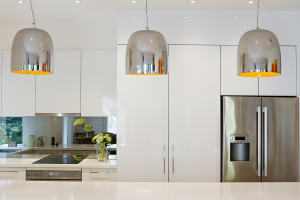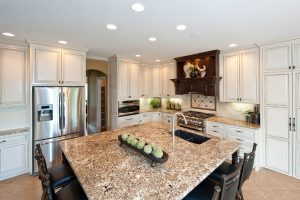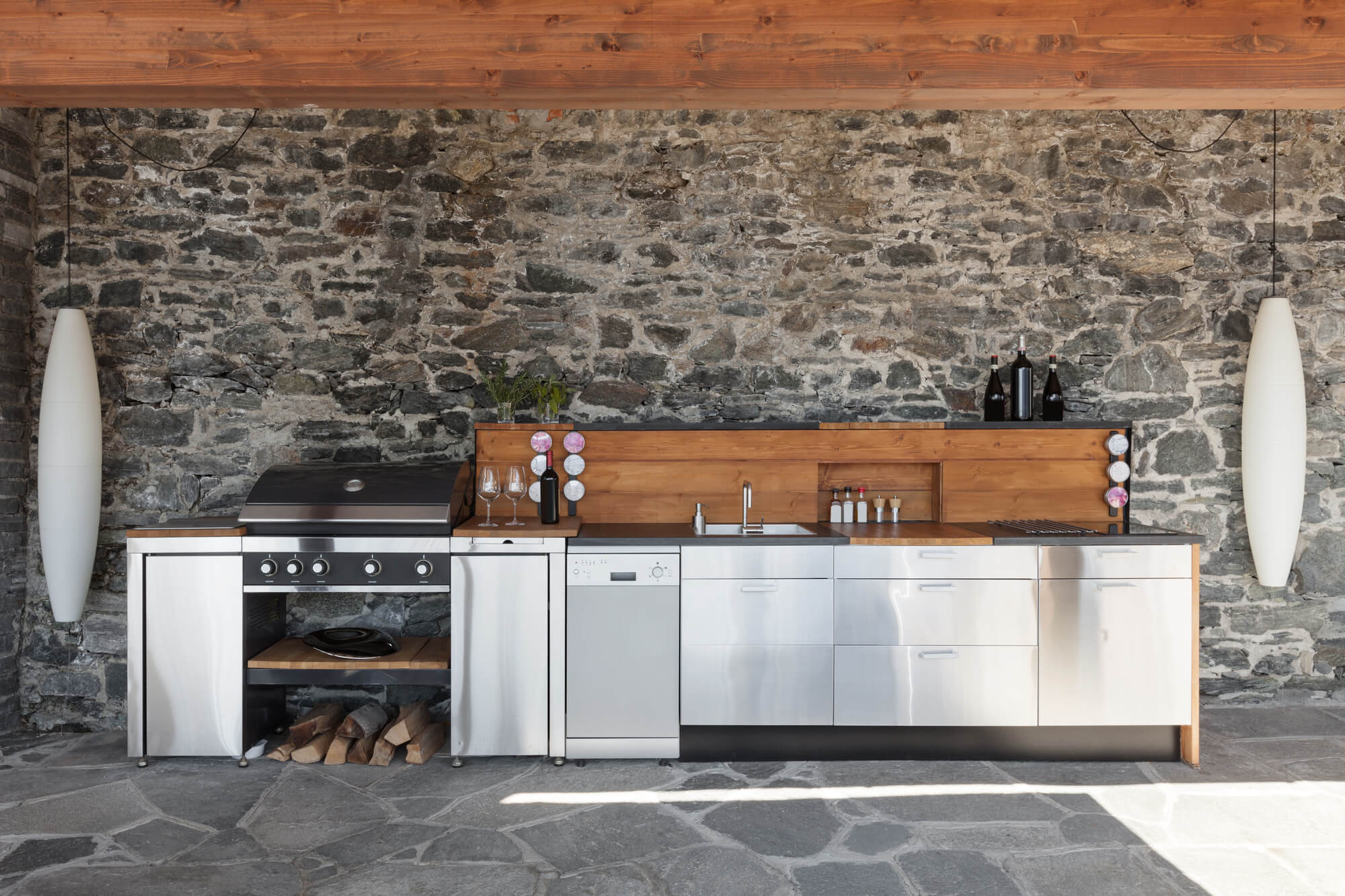Table of Contents
Introducing an outdoor kitchen to your home is an exceptional way to utilise your outdoor space. It adds a unique flair to backyard living, elevates your entertaining capabilities, and may even boost your property value.
Unfortunately, creating an outdoor kitchen requires careful planning and design. If you need help figuring out where to start, this guide will provide step-by-step strategies to maximise your outdoor area by creating a practical, stylish, and functional outdoor kitchen.
Evaluate Your Space And Define Its Purpose
When planning your outdoor kitchen, a thorough evaluation of the available space is crucial. Take into account the space size, coverage, and local climate conditions.
For the space size, regardless of your preferred outdoor kitchen layouts, measure your outdoor area. Large spaces can accommodate comprehensive kitchen setups with multiple amenities. On the contrary, smaller spaces require a more compact and efficient design.
In terms of coverage, think about whether your space is covered or open. If it’s exposed to the elements, you might need to invest in a pergola or gazebo for protection.
With regards to climate conditions, assess your local weather. For instance, if you live in a windy area, position your kitchen in a way that shields it from the wind. If you’re in a hot climate, make sure there’s enough shade to keep the area cool.
After the spatial assessment, define the purpose of your outdoor kitchen. Here are some things to consider:
- Entertainment: If you often host large gatherings, you’ll want to include plenty of seating and a large grilling area in your design. An outdoor fridge or drinks cooler might also be a good idea.
- Family Meals: If you envision family dinners under the stars, your outdoor kitchen might be a more intimate space. A smaller, efficient grill and a cosy dining setup would be ideal.
- Culinary Exploration: For serious cooks, your outdoor kitchen could act as a second kitchen. Consider including more advanced cooking appliances like pizza ovens or smokers.
Defining the purpose of your outdoor kitchen will ensure that it’s tailored to your lifestyle and makes the most out of your outdoor space. If you still need to decide about your options, consult a professional carpenter to make an informed decision.
Select The Perfect Spot
Once you’ve defined your kitchen’s purpose, it’s time to find the ideal location. Proximity to your indoor kitchen is crucial for convenience when transporting food and dishes. However, it’s also important to consider factors like sunlight exposure, wind direction, and privacy from neighbours.
Take note that it’s not only about utility. You want this space to be an enjoyable place to spend time. So, factor in the views, surrounding greenery, and overall ambience.
Plan Your Layout And Essential Amenities
After determining the perfect spot, plan your layout. This involves deciding what amenities to include based on your needs and space constraints. Do you want a fully functional kitchen with a built-in grill, sink, fridge, and prep area? Or perhaps a more straightforward setup with a grill and table is enough?
Your layout should also include an appropriate dining area. Would a large dining table suit your needs, or would a more relaxed lounge setting be more appropriate?
Bear in mind that proper traffic flow and open space are essential to ensure comfort and ease of movement. Your design should allow you to move easily between the cooking area, prep station, and dining space.
Additionally, storage is a key element often overlooked. You’ll need ample storage for cooking utensils, dishes, and other kitchen essentials. Integrated cabinets or a garden shed nearby could be suitable solutions. Keep in mind your outdoor kitchen should be not only stylish but also highly functional and convenient.

Invest In Quality Outdoor Appliances
Investing in quality appliances is essential for an outdoor kitchen. Appliances built to withstand weather variations can help keep your kitchen functional and attractive for years.
Opt for a high-quality barbecue or grill that suits your cooking style. Consider other appliances like an outdoor fridge, pizza oven, or even a wine cooler to complement your culinary needs.
Choose Durable And Stylish Materials
When creating an outdoor kitchen, durability is just as crucial as style. Materials should be both weather-resistant and easy to clean. Stainless steel, concrete, and stone are popular choices due to their durability and aesthetic appeal.
However, don’t shy away from adding personal touches. Choose materials, colours, and textures that reflect your personal style, creating a cohesive look with the rest of your home.
Consider Lighting And Heating Options
Lighting can transform your outdoor kitchen from a daytime barbecue spot into a magical night-time entertainment space. Task lighting is essential over the cooking area for safety and functionality, while ambient lighting around the dining space creates a warm and inviting atmosphere.
On cooler nights, proper heating ensures your outdoor kitchen is always ready for use. Options such as an outdoor heater or fire pit can add warmth, allowing you to enjoy al fresco dining even in the colder months.
Plus, these lighting and heating elements also add an aesthetic touch, creating a cosy and welcoming ambience. Solar lights and energy-efficient heaters can also help save on energy costs, adding sustainability to your outdoor kitchen’s many attributes.
Provide Adequate Shelter And Ventilation
Since this is an outdoor space, it’s essential to have adequate shelter from the sun, wind, and rain. An awning, pergola, or gazebo can protect your kitchen area and extend its usability.
Similarly, ventilation is a must for an outdoor kitchen. Smoke from grilling can accumulate if your outdoor kitchen isn’t ventilated adequately. This can create an unpleasant cooking environment and could even be a safety hazard. Therefore:
- Opt For A Good Layout: Make sure your grill or oven is placed in a way that smoke won’t blow into dining or seating areas.
- Consider A Ventilation Hood: Especially for fully covered spaces or where you plan heavy cooking, a ventilation hood can be a good investment.
By addressing shelter and ventilation in your planning stage, you can guarantee a comfortable and safe environment for cooking and dining in your outdoor kitchen.
Ensure Accessibility And Safety
Make sure that your outdoor kitchen decor and amenities are accessible and safe. This includes providing easy access to your home and garden, ensuring sufficient pathways for moving around, and maintaining safe storage for sharp utensils and hazardous materials.
Also, think about child-friendly designs if you have kids. Consider locks for cabinets and a safe distance between the cooking area and play zones.
Related Kitchen Resources

Marble Countertops Cost
A complete breakdown of realistic marble countertop costs in Australia. Learn how to calculate accurate pricing for your dream renovation.

Glass Splashback Cost Per M2
There’s no material more suitable for us as a splashback than glass. It’s easy to clean and makes a compact kitchen feel bigger than it is.

How Much Does a New Kitchen Cost?
Table of Contents The cost of new kitchen construction may range from $10,000 (budget) to $80,000+ (luxury) depending on the size of the room, materials

